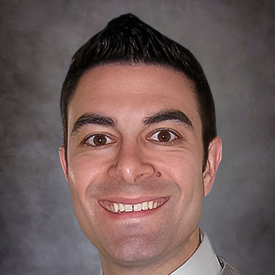Shawn C. Ciecko, MD, FACS
-
Primary Specialties
-
Languages Spoken:English
About Shawn Ciecko, MD, FACS
Dr. Shawn C. Ciecko is an Otolaryngologist (Ear, Nose and Throat / Head and Neck Surgeon). He graduated from the University of Rochester and attended the University at Buffalo School of Medicine. He completed both internship in General Surgery and residency in Otolaryngology Head and Neck Surgery at the Duke University Medical Center. Dr. Ciecko spent two years as Duke’s chief resident in Otolaryngology Head & Neck Surgery. He has received several honors in his career including Duke Hospital’s consultant of the year in 2006. He was elected to the Alpha Omega Alpha National Medical Honor Society and is currently a member of the American Academy of Otolaryngology Head & Neck Surgery and a Fellow of the American College of Surgeons. Dr. Ciecko is Board Certified by the American Board of Otolaryngology-Head and Neck Surgery and has a special interest in thyroid surgery. He performs ultrasound guided biopsies for thyroid nodules in the office and was Co-director of the 2010 Long Island College Hospital’s Head and Neck Symposium on Thyroid disease.
Dr. Ciecko is the President of Operation International -Team ENT. This international surgical mission group travels yearly on missions around the world for those in need. Team ENT is currently building the infrastructure of ENT and Plastic Surgery in Guatemala City –
Visit Team ENT's website to learn more: https://www.operationinternational.org/team-ent/
Dr. Ciecko’s interests are in adult and pediatric ENT, endoscopic sinus surgery ( including minimally invasive in-office procedures like balloon sinuplasty), head and neck surgery with a focus in thyroid and parathyroid surgery. He is currently a clinical instructor at SUNY Downstate Medical Center in Brooklyn and operates at Richmond University Medical Center in Staten Island and Methodist Hospital in Brooklyn.
Drs. David Bough, Mark Carney, and Shawn Ciecko go to Guatemala City: In 2016 Operation International Team ENT traveled to Guatemala City for the fifth consecutive mission in five years, after traveling to Ecuador and the Philippines. The team will concentrate their efforts in this Central American country for the next few years making more of a global impact on the health of the Society and widening their footprint in this nation...below is a video that shows what they experienced in November 2017.
- University of Buffalo
- General Surgery, Duke University Medical Center
- Otolaryngology, Duke University Medical Center

